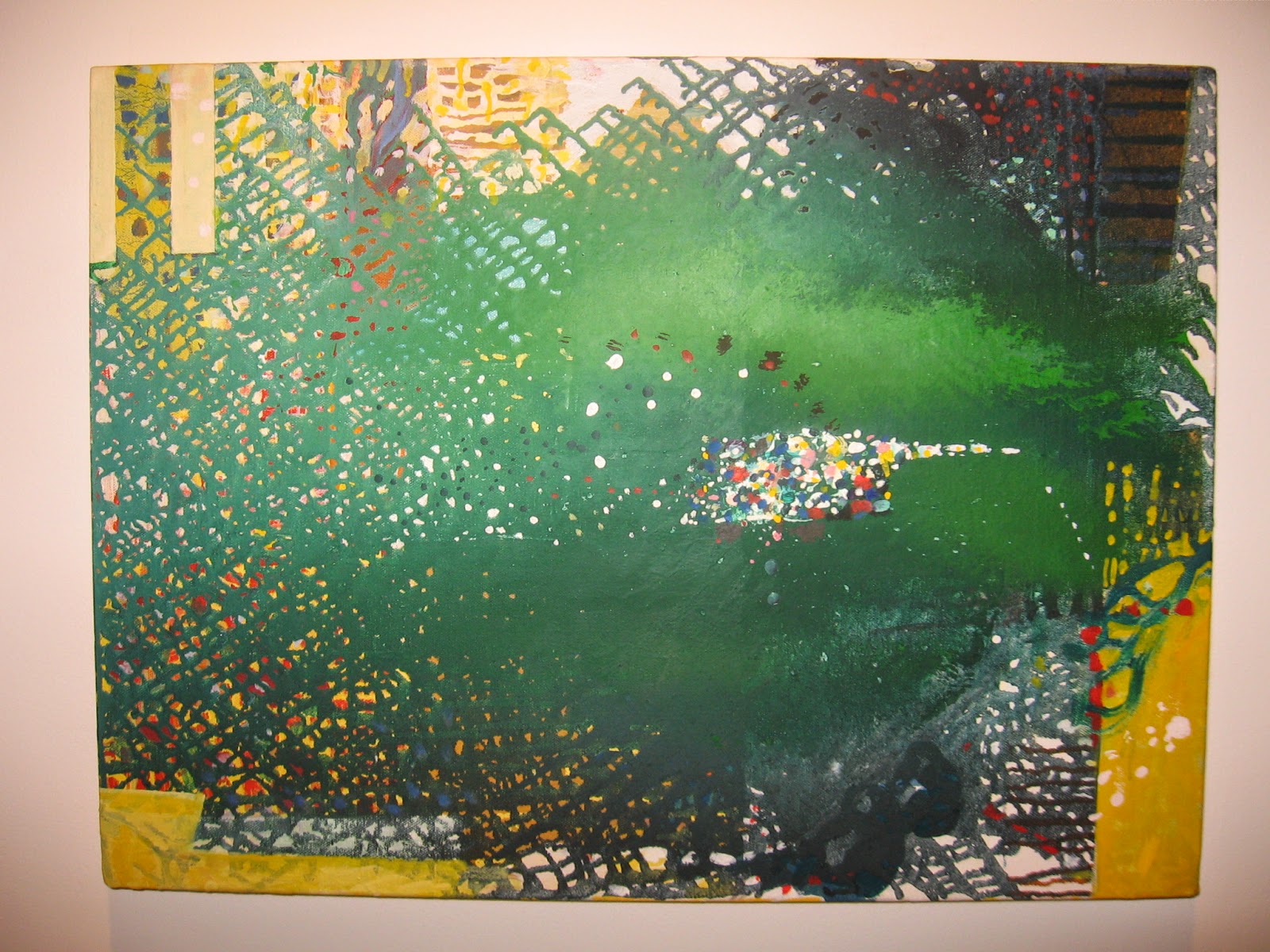Drip the Paint Fantastic
By Tom Wachunas
EXHIBIT: ACTION & ACCIDENT: Paintings by Cecily
Kahn, Main Hall Art Gallery at Kent State University At Stark, 6000 Frank
Ave. NW, North Canton, THROUGH NOVEMBER 30 / Gallery hours Mon.-Fri. 11 AM to 5
PM, Sat. 10 AM to Noon www.cecilykahn.com
“What goes on in abstract art
is the proclaiming of aesthetic principles... It is in our own time that we
have become aware of pure aesthetic considerations. Art never can be
imitation.” -Hans Hoffman
The above observation
by Hans Hoffman is an invitation to consider motivations and meaning in the 20th
century emergence of nonobjective abstract painting. The casual viewer might
understandably regard contemporary abstract art as an abandonment of the
standards and definitions that had traditionally guided the art of painting.
Those standards were at one point largely driven by the presumption that
painting should be the skilled representation or even improvement of
recognizable reality. This gave rise to centuries of masterful artifice, to be
sure, but illusionism just the same, and certainly nothing that photography wouldn’t
eventually accomplish.
Still, much of Modernist
abstraction was not so much a forsaking of aesthetic principles as it was the
inevitable liberation of the painted picture plane from the formal constraints
of imitation. Painting was finally freed to declare a basic truth of itself - pigments
on a flat, two-dimensional surface. By the time the Abstract Expressionists
arrived during the 1950s, markmaking, which is to say the overall configuration
of lines, shapes and colors, had become an intuitive process that was in effect
an unashamed surrender to the substance and properties of paint, the
physicality of gesture and brushstroke, and an otherwise apparent empathy with
chance and accident.
These painters (as opposed to the reductive
Minimalists who undermined the meaning of meaning, as it were, by rejecting
emotive or metaphorical content in their works) generated a visual language of
essences that transcended the duplication of incidentals from “the real world.”
Think of it as evolving a highly expressive visual language comprised of many
dialects.
I think of painter Cecily Kahn, a resident of
Manhattan, as eloquently “speaking” a uniquely urban dialect. And while her
works gathered for this exhibit indicate a kinship with the Abstract
Expressionists, the surface tactility and vibrant palette of her oil paintings
(aside from her nine luminously liquid gouache pieces) suggest a subcategory one might call Abstract Impressionism, as in impressions of
urban energy, both visceral and evanescent.
A dominant
characteristic of these paintings is the sense of tension between colors and
shapes, as if suspended in moments of flux. Clusters of concentrated activity –
repeated linear elements, generous daubs and dots of paint, organic shapes of
varying sizes – seem to rise from and/or disappear into fields of color poured
on to the surface and allowed to leave intersecting drip trails. Exclamatory patterns
emerge from amorphous “background” expanses. Through it all there is a great
degree of painterly wit, often evidenced by the interplay of negative and
positive shapes and space.
These works draw a
fascinating bead on the oscillating pulse of a sprawling island city that never
sleeps. I see them as suggesting, without literally illustrating, the urban
milieu – shifting topographies of mechanical traffic and pedestrian movements,
the variable geography and architecture, the nearness to water. Look long enough and you might even get the
sense that Kahn doesn’t just see
contrasting rhythms and motion threaded through ever-present structures, but
also hears ephemeral harmonies in the cacophony, and savors
periods of quiet amid frenetic noise. New York, New York…there’s always melody
in the mayhem.
PHOTOS, from top:
untitled oil on panel; untitled oil on panel; untitled oil on panel; untitled
oil on linen; Surf, oil on linen





No comments:
Post a Comment